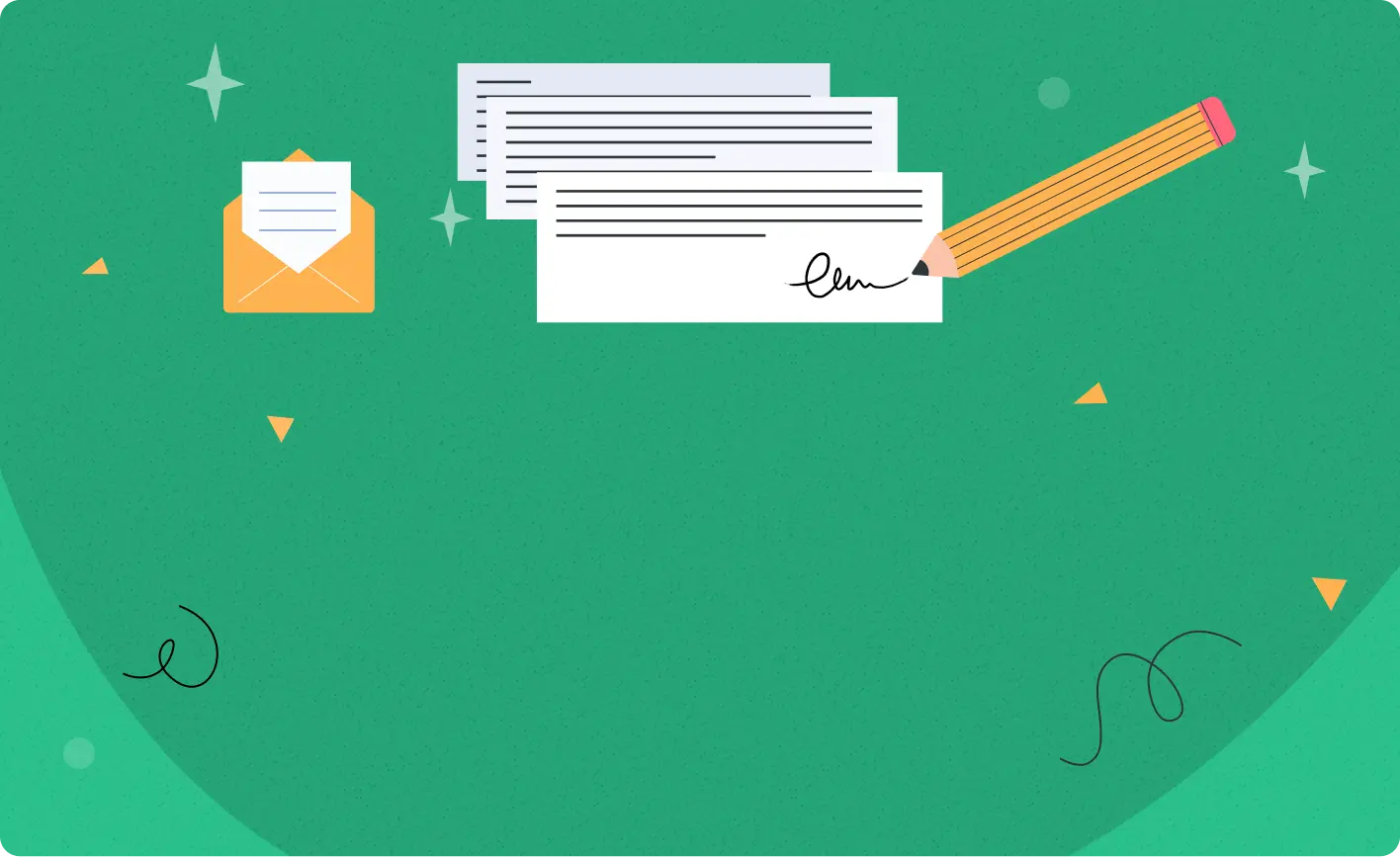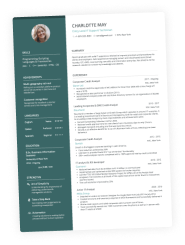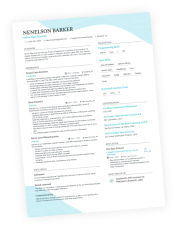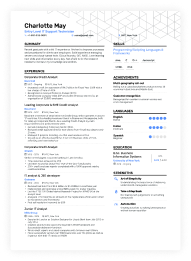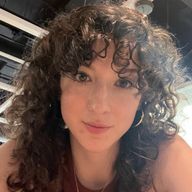Starting with a standard cover letter can save time, but sending the same version to every job is risky. Hiring managers can usually tell when a letter hasn’t been tailored, and it may come across as generic or uninspired. A well-written base draft is a great starting point, but the real impact comes from customizing it for each role.
You don’t have to start from scratch. With a few smart edits—like referencing the job title or adding a relevant achievement—you can make your cover letter feel genuinely personal and aligned with the role.
In this guide, you’ll learn how to do exactly that. Whether you’re switching careers, applying for your first role, or aiming for the next step, a little customization can make a big difference.
Key takeaways
- A tailored cover letter shows genuine interest and aligns your experience with what the role requires.
- You don’t need to rewrite the entire letter—just adjust the parts that matter most.
- Reusing the same letter might be faster, but a smart template helps you tailor quickly—without missing your shot.
- A strong, personalized application can make the difference between landing an interview and getting passed over.
Try Enhancv’s Cover Letter Builder to get a solid draft, then use the tips below to make it truly yours.
What is a tailored cover letter?
A tailored cover letter is one that’s customized for a specific job opening and employer. Instead of relying on a one-size-fits-all template, a tailored letter addresses the exact requirements of the role, uses keywords from the job description, and connects your most relevant skills and achievements to the company’s needs.
It’s not about changing every word—it’s about aligning your message with what the hiring manager is looking for. Think of it as answering the unspoken question: “Why are you the right fit for this job at this company?”
Generalized opening sentence example:
“I am interested in your open position and believe my skills are a good match.”
Tailored opening sentence example:
“I’m excited to apply for the Marketing Analyst role at GreenTech, where my background in data-driven campaigns and sustainability aligns closely with your mission.”
Tailored cover letters feel personal, intentional, and relevant—and that’s exactly what recruiters notice.
Just like you tailor your resume, your cover letter should reflect the specific role you're applying for. It reinforces the skills and experience your resume presents and adds the kind of context bullet points often leave out.
In our experience, tailored cover letters consistently lead to better results. While there are occasional exceptions, in most situations, customizing your letter for each job is the clearest way to stand out. It shows that you're not just looking for any job—you’re interested in this one.
Author’s take
Should you customize your cover letter for each job?
Yes—and it’s easier than you might think.
You don’t need to write a brand new letter every time. Just update the key elements: your opening line, a couple of targeted examples, and your closing paragraph. These small edits can make the whole letter feel personal and relevant.
The goal is to help the reader feel like the letter was written for them. That kind of relevance signals effort, interest, and alignment—and that’s what hiring managers notice.
A “base draft” is a reusable version of your cover letter with flexible language, saved examples, and a strong structure. You can personalize it in just a few minutes for each job. Tools like Enhancv’s Cover Letter Generator make this even easier by helping you create and manage different versions without starting from scratch.
Who benefits most from tailoring a cover letter?
Tailoring your cover letter isn’t just for executive-level applicants or creative industries.
It’s useful for almost everyone—especially if you’re facing any of the following:
- You’ve applied before and didn’t hear back: If your applications are going unanswered, tailoring your cover letter might be the shift that gets you noticed.
- You’re early in your career: Entry-level candidates often hear that cover letters matter but don’t always know where to start. A customized letter helps you focus on transferable skills and enthusiasm, even if your resume is light.
- You’re using a resume or cover letter builder: If you’re generating letters quickly, it’s tempting to send the first version as-is. But with a few personal touches—like mentioning the company by name or adjusting your examples—you can avoid sounding like a template.
The point is, no matter your background or level of experience, tailoring your cover letter gives your application a stronger voice.
How to tailor your cover letter efficiently
With a smart base draft and a few well-placed edits, you can quickly tailor your cover letter so it actually connects with the job you’re aiming for.
Here’s how to do it, step by step:
1. Analyze the job description
Read the posting carefully. What skills are repeated? What responsibilities seem most important? These are your guideposts.
PRO TIP
Try highlighting keywords or dropping the text into a word cloud tool to see what stands out.
2. Research the company
A good cover letter doesn’t just match the role—it fits the company, too. Spend a few minutes checking their website, social media, or recent press releases.
Look for:
- What they value
- What they’re working on
- The tone they use when describing themselves
This helps you mirror their language and show that you’re a cultural fit.
3. Match your experience to their needs
Choose two or three strengths or accomplishments that clearly align with what they’re asking for. Think quality over quantity—what proves you can do this job?
If you’re switching careers, explain how your past experience still brings value to this role.
4. Customize the opening paragraph
Start with something specific. Mention the job title, the company name, and why this particular role caught your eye.
Skip the generic intro—this is your first chance to show them you’re paying attention.
5. Tailor the body
This is where you connect your experience to their priorities. Use clear examples and, if possible, include results or metrics.
Focus on what matters most to them, not just what you’re proud of.
6. End with intention
In your closing paragraph, reinforce your interest in the role and the company. Add a line about your availability or how you’d love to continue the conversation. Make it feel like the natural next step is an interview.
7. Keep the format clean and the tone real
Aim for one page, three to four short paragraphs, and enough white space to breathe. Use a professional tone, but don’t be afraid to sound like yourself. Authenticity goes a long way.
Tips to speed up the tailoring process
Customizing your cover letter doesn’t have to eat up your day. With a few smart habits, you can tailor each one quickly, without sacrificing quality.
Here’s how to make it easier (and faster):
Efficient ways to tailor your cover letter
- Create a flexible base template. Start with a general draft that already includes your top strengths, a solid structure, and examples you can swap in and out.
- Save modular paragraphs. Keep a collection of “plug-and-play” snippets: one about your leadership style, one about your data skills, one about managing clients—whatever fits your roles. Edit slightly to match each job.
- Track your applications. A simple spreadsheet can help you keep notes on what you’ve emphasized for each job, so you don’t repeat yourself or miss something important.
- Use AI tools wisely. Tools like Enhancv’s Cover Letter Generator can help you generate a strong first draft. Just make sure you review and personalize it before hitting send.
- Limit tailoring to what matters most. Focus on the intro, one to two key achievements, and your closing. These small changes can make the whole letter feel authentic.
Once you treat tailoring as a focused edit—not a full rewrite—it becomes a quick, repeatable part of your job search process.
Frequently asked questions on cover letter customization
Still have a few doubts about tailoring your cover letter? These quick answers can help clear things up.
How should a cover letter be laid out?
Stick to a clean, simple format that’s easy to read at a glance. Use:
- A professional header with your contact info.
- A personalized greeting (no “To Whom It May Concern”).
- Three to four short paragraphs: intro, body, closing.
- Plenty of white space and a simple font like Rubik or Lato.
How do I tailor for a career change?
Focus on transferable skills. Instead of emphasizing past job titles, highlight experiences or results that relate to the new field. Briefly explain the transition in your opening or body paragraph, and show how your background brings value to the role you're pursuing.
Example:
“After five years leading cross-functional teams in retail operations, I’m now excited to apply my project management and budgeting experience to an entry-level role in healthcare administration. I’m drawn to your mission of improving patient access, and I’m confident that my ability to coordinate teams and manage high-volume scheduling can support that goal from day one.”
This shows alignment without overexplaining—and keeps the focus on what you bring to the new role.
Conclusion
Tailoring your cover letter doesn’t have to be overwhelming or time-consuming. A few focused edits can turn a generic draft into a powerful pitch that feels personal, relevant, and intentional.
Remember: you’re not just applying for a job. You’re starting a conversation with a potential employer. Not everyone sends a cover letter. But when you make it relevant, it can quietly do a lot of the heavy lifting.
Whether you're switching industries, applying for your dream role, or just sending out your next application, let your cover letter reflect the kind of candidate they’ll want to meet.
